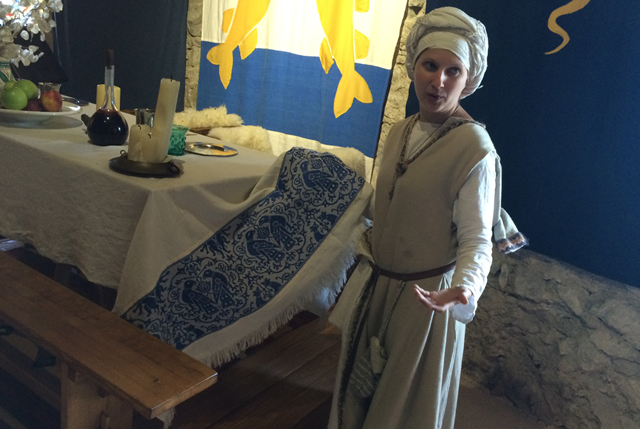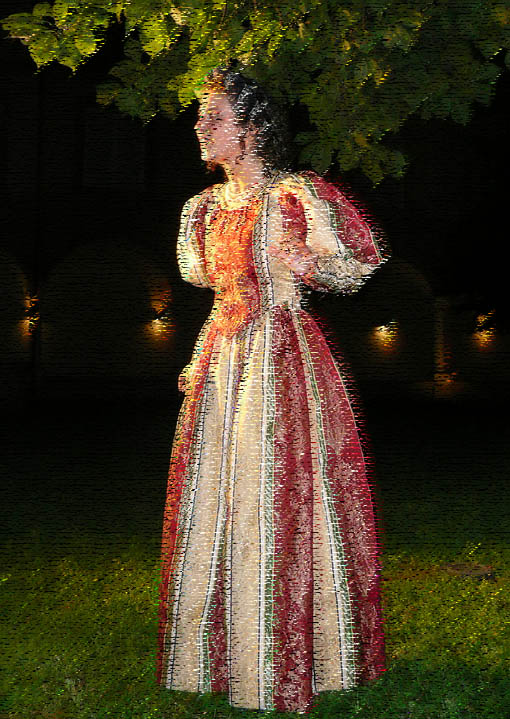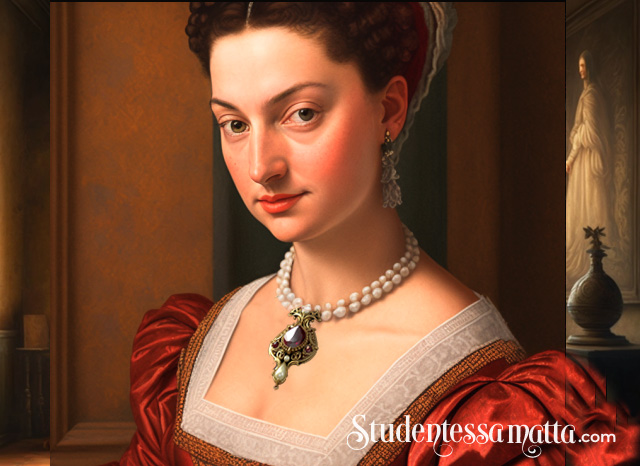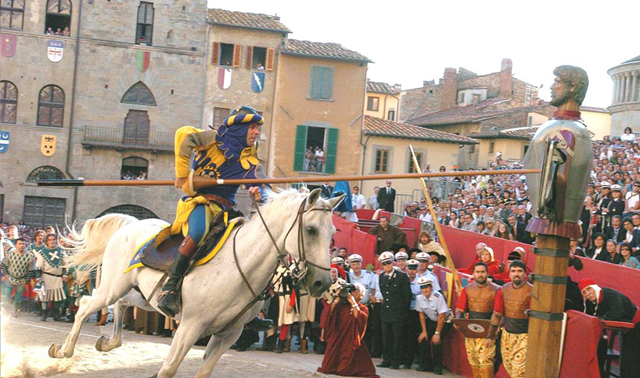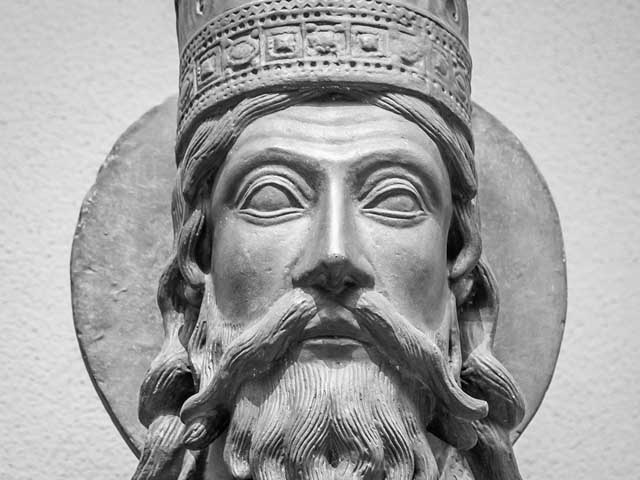
Mi piace sempre una leggenda fantastica, piena di misteri e intrighi, e l’anno scorso quando sono andata a Chiusi, i miei amici mi hanno accontenta raccantadomi la storia di Porsena, un re etrusco, che era tanto ricco quanto benevolo.
I always love a good legend, filled with mystery and intrigue, and last year when I visited Chiusi, my friends were happy to tell me the story of Porsena the Etruscan King, who was as rich as he was benevolent.
Benvenuti sul canale Matta e il blog Matta. Restate sintonizzati per imparare il resto della storia.
Welcome to the Matta Youtube Channel and Blog. Stay tuned to learn the rest of the story.
Porsena regnò su Clusium, ora Chiusi, cinquecento anni prima della nascita di Cristo. Andò in guerra contro Roma dopo che l’ultimo re romano Lucio Tarquinio fu deposto e gettato fuori città dai romani. Lucio, la cui famiglia era di origine etrusca, cercò di riconquistare la città alcune volte da solo prima di fare appello al re Porsena per assistenza.
Porsena ruled over Clusium, now Chiusi, five-hundred years before Christ was born. He went to war against Rome after the last Roman King Lucius Tarquinius but was deposed and thrown out of the city by Roman citizens. Lucius, whose family was Etruscan in origin, tried to retake the city several times on his own before appealing to King Porsena for assistance.
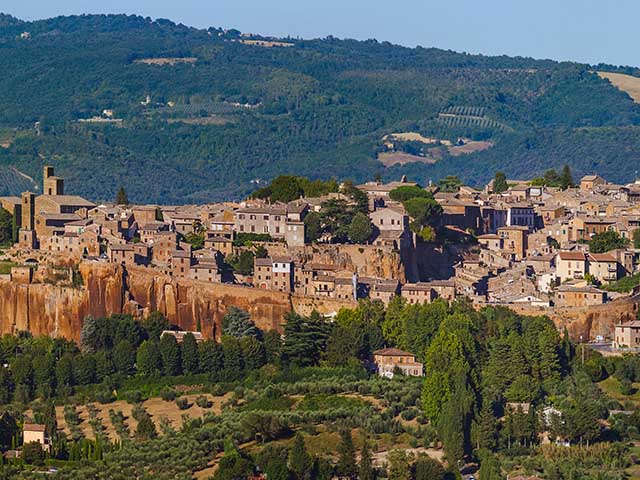
Il re etrusco, che esercitava molto influenza nel suo regno appena a nord di Roma e chi era anche molto ricco, accettò di aiutare Lucio. Il re accumulò un esercito e attaccò Roma e la sottomise. Tuttavia, Porsena cambiò idea sul reinserimento di Lucio Tarquinio sul trono romano e il re etrusco decise invece di assumere il controllo della città. Documenti storici indicano che povero Lucio Tarquinio non è mai tornato a Roma e in seguito fu anche espulso da Chiusi.
The Etruscan King, who wielded a lot of clout over his realm just north of Rome, and who was very wealthy, agreed to help Lucius. The king amassed an army and attacked Rome and subdued it. However, in the end, Porsena changed his mind about re-instating Lucius Tarquinius to the Roman throne and decided instead to assume control of the city himself. Historical documents indicate that Tarquinius never returned to Rome and was later also ejected from Chiusi too.
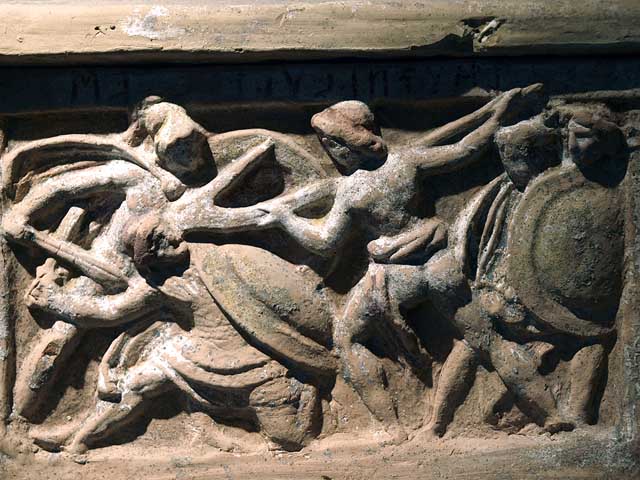
Forse, alla fine, la decisione di pacificare i romani e trovare una tregua benefica per tutti era perché Porsena era estremamente colpito dagli atti di coraggio dei romani a cui ha assistito durante la guerra.
Perhaps, in the end, Porsena’s decision to pacify the Romans and find a beneficial truce for everyone was because he was extremely impressed by the acts of courage of the Romans that he witnessed during the war.
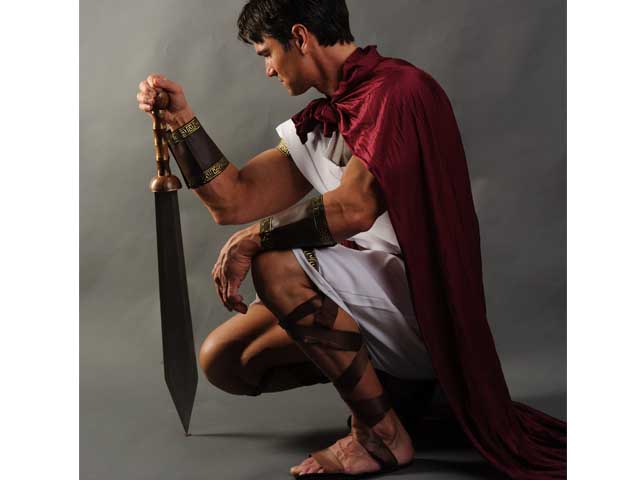
In un caso, un ragazzo di nome Gaio Muscius si intrufolò nell’accampamento etrusco fuori città, eseguendo gli ordini del Senato romano di assassinare Porsena. Ma il ragazzo sciocco non riuscì a determinare il re etrusco dalla segretario del re e ha pugnalato a morte l’uomo sbagliato. Immediatamente circondato da guardie, il giovane ha ammesso le sue intenzioni e ha avvertito Porsena di essere solo uno dei tre cento giovani romani che avrebbero continuato a tentare di uccidere il re. Per dimostrare il suo valore, Gaio ha messo la sua mano destra in un fuoco sacrificale, distruggendo il suo braccio e guadagnando a se stesso e i suoi discendenti il cognome Scaevola – “mancino.”
In one instance, a young boy named Gaius Muscius sneaked into the Etruscan encampment outside the city, carrying out orders of the Roman Senate to assassinate Porsena. But the silly boy couldn’t determine the Etruscan King from the King’s secretary and stabbed the wrong man to death. Immediately surrounded by guards, the young man admitted his intent and advised Porsena that he was just one of 300 Roman youths who would continue attempting to kill the King. To prove his valor, Gaius thrust his right hand into a sacrificial fire, destroying his arm, and earning for himself and his descendant the last name Scaevola – “lefty.”

Un’altra storia riguarda una giovane ragazza romana in ostaggio di nome Cloelia. Dopo essere stata catturata, ha cercato di fuggire dal campo di Porsena portando con sé un gruppo di vergini romane. Fu rapidamente rinconquistata, ma Porsena, così colpita dal coraggio di Cloelia, decise di lasciarla libera, permettondole di scegliere la metà degli ostaggi rimanenti per andare via con lei.
Another story involves a young Roman hostage named Cloelia. After being captured, she tried to flee Porsena’s camp, taking with her a bevy of Roman virgins. She was quickly recaptured, but Porsena, so impressed by Cloelia’s bravery, decided to let her go free, allowing her to choose half the remaining hostages to go with her.
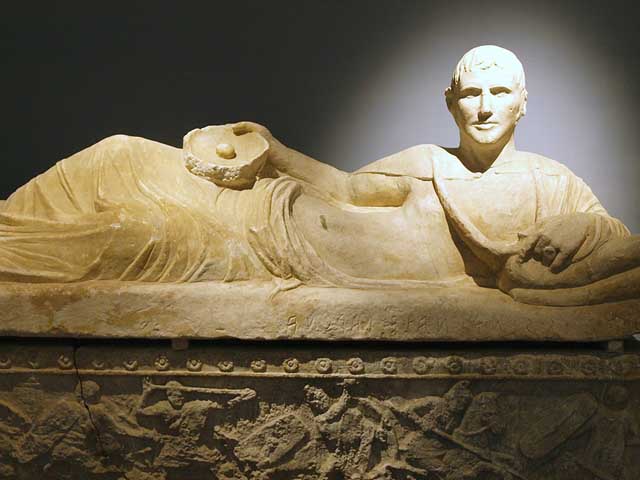
Alla morte di Porsena, per celebrare il saggio e potente re etrusco, fu costruita una magnifica tomba in suo onore. Plinio cita parole per parole la contabilità di Varro (uno studioso che precedeva Plinio di circa due cento anni) che al di fuori delle mura di Chiusi, fu costruito un magnifico edificio costituito da cinque piramidi fatte di blocchi di pietra lunghi tre cento piedi e alti cinquanta piedi. All’interno della tomba, gli architetti hanno disegnato un labrinto così complicato e confuso da navigare che è stato necessario entrare con un gomitolo se si voleva ritrovare la via d’uscita.
When Porsena died, to celebrate the wise and powerful Etruscan king, a magnificent tomb was built in his honor. Pliny quotes word-for-word Varro’s accounting (a scholar who predates Pliny by about 200 years) that outside the walls of Chiusi, a magnificent edifice was built consisting of five pyramids made of stone blocks 300 feet long and 50 feet high. Inside the tomb, architects constructed a labyrinth so complicated and confusing to navigate one had to enter with a ball of thread if one wanted to find his way out again.
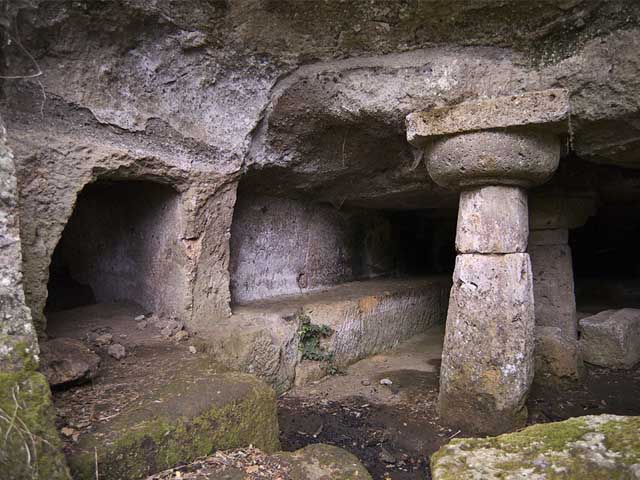
Ciò che rende la tomba di Porsena ancora più misteriosa e intrigante — e ciò che attira il mio interesse — è che le voci dicono che il re etrusco fosse sepolto con tutti i suoi gioielli, spade, collane, anelli e preziosi manufatti. Per finire, Porsena è stato messo a riposo con la sua elegante e costosa corona d’oro in testa.
What makes Porsena’s tomb even more mysterious and intriguing and what piques my interest is that it was rumored that the Etruscan King was buried with all his jewels, swords, necklaces, rings, and precious artifacts. To top it all off, Porsena was laid to rest with his elegant — and very expensive gold crown on his head.
Ma la cosa misteriosa? Fin da oggi nessuno ha mai trovato la tomba di Porsena.
But the mysterious thing about this,
as of today, no one has ever found Porseno’s tomb.
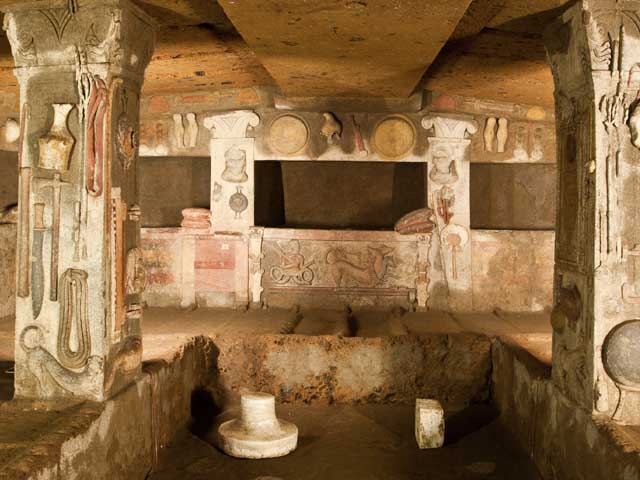
Inutile dire che tante persone hanno provato di trovarlo… dopotutto chiunque dovrebbe trovare la tomba di Porsena scoprirà un tesoro di splendidi oggetti. E, come potete indovinare, naturalmente, innumerevoli persone nel corso degli anni hanno fatto del loro meglio per individuare la tomba nascosta di Porsena.
Needless to say, many people have tried to find it… after all anyone who should find Porsena’s tomb would discover a treasure trove of beautiful objects. And, as you would guess, of course, countless individuals over the years have tried their hardest to locate the hidden tomb of Porsena.
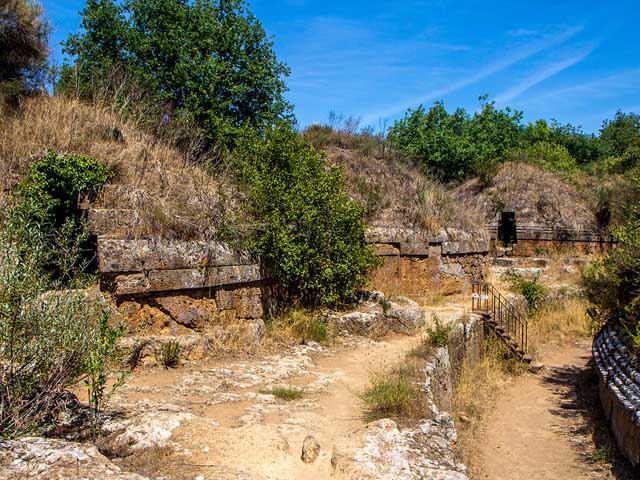
In effetti, il mio amico e guida nelle caverne sotterranee che si aprono sotto l’antica città di Chiusi me ha raccontato, da adolescente, che era un passatempo preferito per lui e i suoi amici di perlustrare le valli e le vigne intorno a Chiusi. Fino ad Orvieto, sono stati accuratamente cercati le colline, nella speranza di trovare la favolosa tomba del re etrusco, la corona d’oro e tutti i suoi oggetti di valori.
In fact my friend and guide into the Etruscan caverns that fan out under the city told me, as a young boy, it was a favorite pastime for him and his friends to scour the valley and the vineyards around Chiusi. All the way to Orvieto, they searched the hills hoping to find the fabulous lost tomb of the Etruscan king, his crown and all his valuable objects.

Invece, per lo più hanno trovato bottiglie di birra vuote e vecchie ruote di trattori arrugginite… ma comunque, la leggenda di Porsena il re etrusco, è sufficiente per farci sognare di trovare tesori nascosti, di notorietà e grandezza.
Instead, mostly they found empty beer bottles and rusty old tractor wheels… but still, the legend of Porsena – the Etruscan King, is enough to make one dream of lost treasure, notoriety, and greatness!
Join me in 2021 in Italy! Two fabulous programs are in the works to study
and travel in Italy and
I’d like you to come with me!
Arezzo in June – Click here for more details
Lucca in September – Click here for more details
